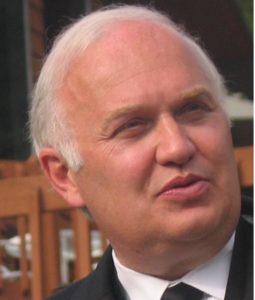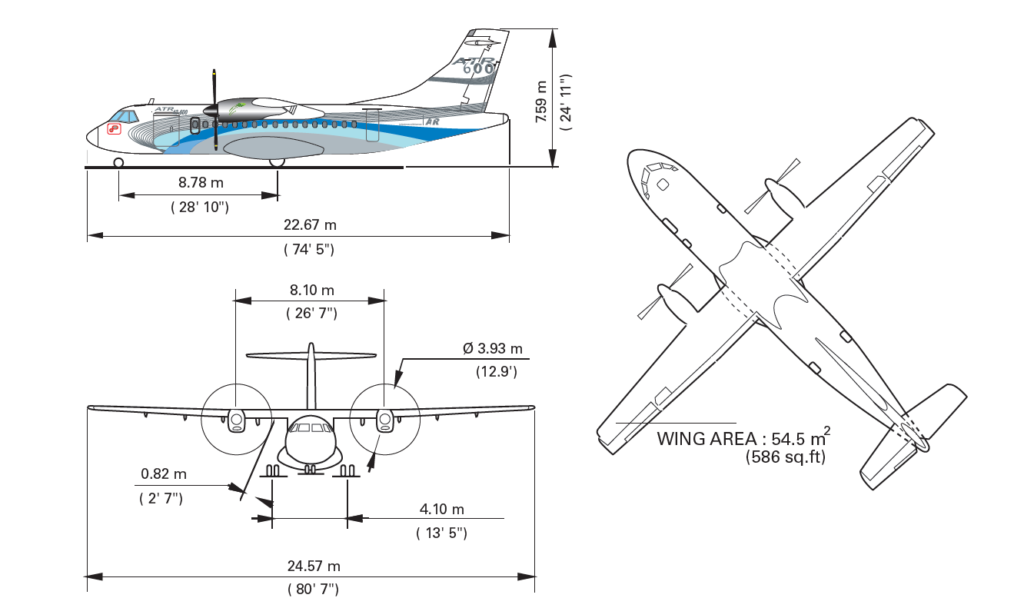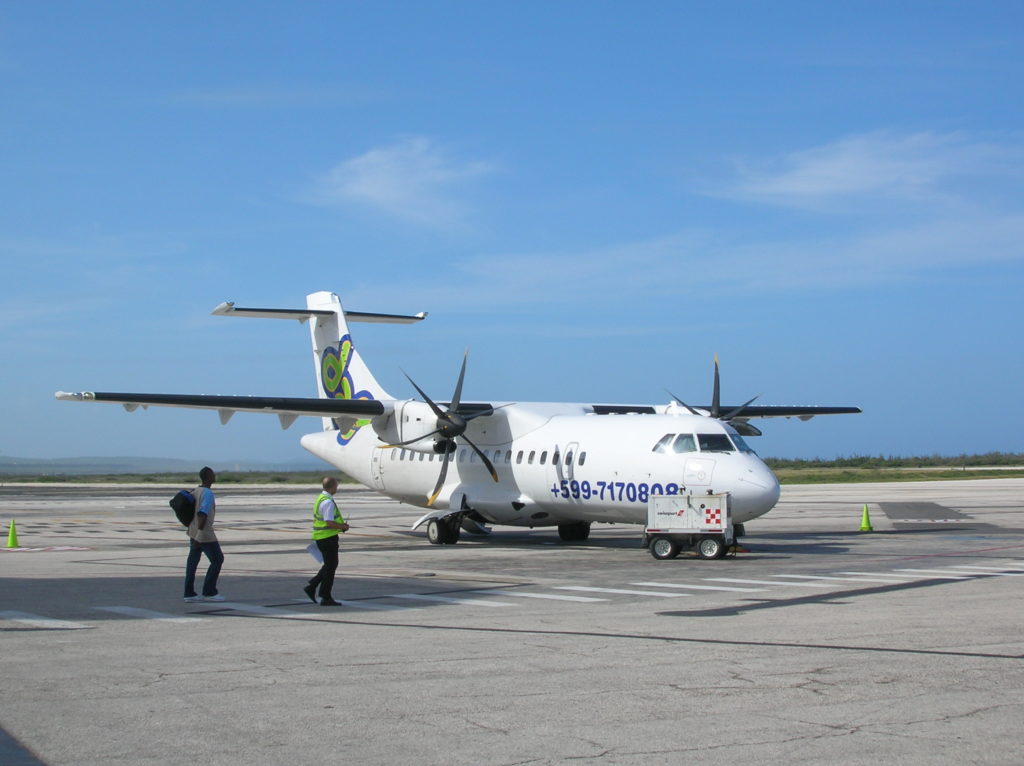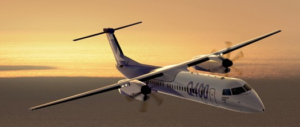Leeham News and Analysis
There's more to real news than a news release.
Leeham News and Analysis
- At long last, Boeing appears near certification and EIS for 777X
- Air India Flight 171 Preliminary Crash Report Is Unclear Regarding Pilot Actions
- Bjorn’s Corner: Air Transport’s route to 2050. Part 30.
- It’s official: MTU’s engine leader named CEO of Airbus Commercial from Jan. 1; future of Open Fan and A220-500 shifts to him
- Embraer E2: Where will the orders come from?
Pratt & Whitney Canada continues development of new airliner turboprop
Subscription Required
Introduction
Sept. 14, 2017, © Leeham Co., Montreal: The prospect of a clean-sheet design turboprop to replace the Bombardier Q400 and ATR series likely has moved to the right by two to three years,

Frederic Lefebvre, Pratt & Whitney Canada.
and the total market remains small, but Pratt & Whitney Canada is forging ahead with development of the next generation engine.
- Update: Embraer is considering reentering the turboprop market, reports The Wall Street Journal.
The goal is to reduce fuel consumption by 15%-20% compared with today’s ubiquitous PW127 and PW150, which continue to see reductions in fuel burn through product improvement packages.
Frederic Lefebvre, VP-Marketing for Regional Airlines, now sees development of the new turboprop slipping to 2022-2026 compared with previous forecasts of an EIS in 2020-2023.
Summary
- The Next Generation Regional Turboprop (NGRT) has major challenges to improve upon the current generation of engines.
- PWC sees a much larger market for a 90-seat turboprop than others.
- Emerging markets key to new opportunities.
Posted on September 14, 2017 by Scott Hamilton
Bombardier admits shortfall on Q400, CRJ, vows comeback
Sept. 13, 2017, © Leeham Co.: Bombardier wasn’t “fully at the top of its game for focus and messaging on the Q400 and CRJ,” a top official admitted Tuesday. But the company is “turning that around” and initial results were seen at last summer’s Paris Air Show with a spurt of orders for the turboprop airliner.
Colin Bole, SVP Commercial made the remarks at BBD’s media day at its Mirabel CSeries/CRJ production site.
Posted on September 13, 2017 by Scott Hamilton
Pratt & Whitney Canada’s hurricane prep for the little guy
Sept. 12, 2017, (c) Leeham Co., Montreal: Preparations by airlines to evacuate passengers and ultimately their own airplanes from the paths of Hurricanes Harvey and Irma were well covered.
The departure of corporate and general aviation airplanes hit Twitter with Flighttracker images.
But less known is how one giant aerospace company prepared to help customers right down to the little guy in general aviation.
Posted on September 12, 2017 by Scott Hamilton
Pontifications: DAE acquires AWAS, moves up in lessor status
Aug. 21, 2017, © Leeham Co.: Commercial aviation in the Middle East may be having its severe challenges right now, but over the weekend a major step forward took place.
Dubai Aerospace Enterprises over the weekend completed its acquisition of lessor AWAS. The combined companies will do business under the name DAE Capital.
It’s a milestone for both companies.
Posted on August 21, 2017 by Scott Hamilton
Bjorn’s Corner: Electric aircraft, Part 8
August 18, 2017, ©. Leeham Co: In this Corner, we will finish the design of the hybrid propulsion system for our 50-seat regional turboprop. We use the ATR42-600 as a reference, as before (Figure 1).
We found an acceptable redundancy concept in the previous Corner, with an APU+generator+battery as backup power source. Now we will finish the design of the hybrid propulsion chain and compare with the original turboprop propulsion.
Read more
Posted on August 18, 2017 by Bjorn Fehrm
Bjorn’s Corner: Electric aircraft, Part 7
August 11, 2017, ©. Leeham Co: In this Corner, we will design the hybrid propulsion system for our 50-seat regional turboprop. We could see in previous Corners that we can’t use batteries as a backup for our gas turbine core and main generator.
The battery gets too heavy as the specific power weight of a battery is simply too low. We will now design a hybrid power chain with a different redundancy concept.
Posted on August 11, 2017 by Bjorn Fehrm
Bjorn’s Corner: Electric aircraft, Part 6
August 03, 2017, ©. Leeham Co: In our search for an electric regional aircraft configuration, we found that a jet aircraft requires too high power levels. The higher speeds of a jet aircraft take the power levels beyond what we can handle with an electric hybrid propulsion system.
Our ambition is to transport 50 passengers on a regional network. For networks which have sectors around 200-300nm, the turboprop is the preferred regional aircraft. We will now re-direct our hybrid regional aircraft project to this market segment.
Posted on August 4, 2017 by Bjorn Fehrm
Pontifications: JADC 20-year forecast: VLA, NMA and other data
July 24, 2017, © Leeham Co.: The Japan Aircraft Development Corp (JADC) just published its 2017-2037 jet and turboprop forecast. JADC forecasts a demand for 33,336 jet airliners and some 2,000 turboprops.
JADC is partly owned by Mitsubishi, which is developing the MRJ70/90 and which is on several Boeing programs.
I like the JADC forecast because it segments the seating categories in more detail than Airbus and Boeing and somewhat differently than Bombardier and Embraer.
I also view JADC as having less of an axe to grind than the Big Four OEMs.
A couple of quick take-aways:
Posted on July 24, 2017 by Scott Hamilton
Airbus, ATR, Boeing, Bombardier, CSeries, E-Jet, Embraer, Middle of the Market, Mitsubishi, MOM, Paris Air Show, Pontifications, Sukhoi
Air Canada, Airbus, ATR, ATR 42, ATR-72, Boeing, Bombardier, Cebu Pacific, CS100, E190, Embraer, JADC, Japan Aircraft Development Corp., Mitsubishi, MRJ70, MRJ90, New Midrange Aircraft, NMA, SSJ100, Sukhoi
Bombardier optimistic about China
Subscription Required
Introduction
June 5, 2017, © Leeham Co.: Bombardier’s activities in China, where the fuselage for the CSeries is co-produced, have been at a standstill.
None of the Memorandums of Understand or Letters of Intent have been converted to firm

Bombardier Q400.
orders. A recent news report suggested renewed talks between COMAC, China’s commercial aircraft enterprise, and Bombardier over acquisition of the CSeries program
LNC sat down with Fred Cromer, president of Bombardier Commercial Airplanes, at the annual general meeting of IATA to discuss these and other issues.
Summary
- An update on the COMAC-CSeries relationship.
- An update on the slow-selling Q400 and CRJ programs.
- An update on the oft-discussed CS500.
Read more
Posted on June 6, 2017 by Scott Hamilton
ATR, Boeing, Bombardier, China, Comac, CSeries, Delta Air Lines, Embraer, IATA, Pratt & Whitney, Premium
ATR, Boeing, Bombardier, China, Comac, CS100, CS300, CS500, CSeries, Delta Air Lines, Fred Comer, GTF, IATA, Pratt & Whitney
No new design needed for turboprops, says Bombardier
- Part 1, ATR, appeared last week. Today’s interview with Bombardier completes the two-part series.
Subscription Required
Introduction
April 4, 2017, © Leeham Co.: Bombardier doesn’t think a new, clean-sheet turboprop aircraft is needed any time soon, a position that stands in contrast with rival ATR.
Ross Mitchell, VP Commercial for BBD, believes the Q400 covers the turboprop segment from 70 to 90 seats and its operational flexibility covers everything airlines need today.
However, ATR has 85% of the backlog with BBD capturing the other 15%.
Still, Mitchell gives a strong defense of the Q400.
Summary:
Don’t believe everything ATR claims about operating cost advantages, BBD says.
BBD can move cockpit and wing production from Canada to lower costs—but where is the question.
Re-engining the Q400 isn’t in the cards, at least any time soon.
Posted on April 4, 2017 by Scott Hamilton







